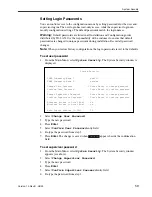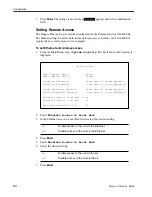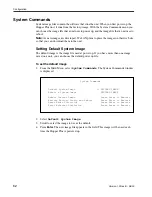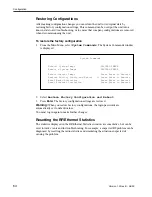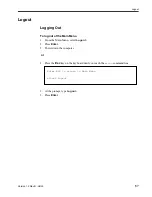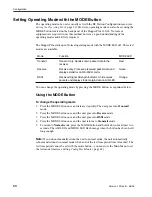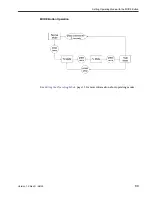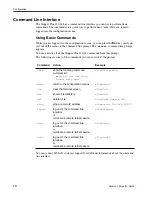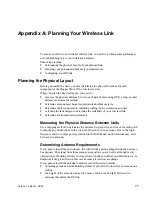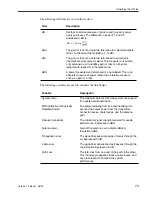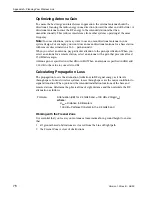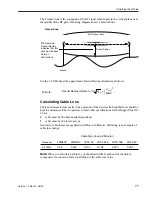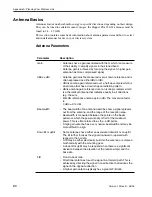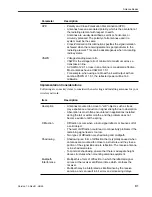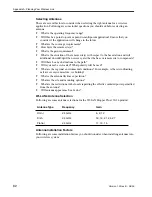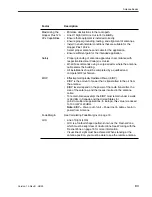
Optimizing the RF Link
Version 1.0 Rev B - 08/00
73
The following dB terms are used in this section:
The following variables are used to calculate the link budget:
Term
Description
dB
Decibel. A relative measure of power used to specify power
gains and losses. The difference in power P1 and P2
expressed in dB is:
dBd
The gain or loss of an antenna reference to a standard dipole.
Gain of a Standard Dipole (dBd) = 2.14 dBi.
dBi
The gain or loss of an antenna referenced to an isotropic
(theoretical point source) radiator. This measure is used with
only antennas, as it quantifies gain or loss of a physical
radiator with respect to a theoretical one.
dBm
A power measurement referenced to one milliwatt. This is an
absolute measure of power rather than a relative measure
such as a gain or a loss.
Variable
Description
System Gain
The maximum path loss that the system can support
for usable data transmission.
EIRP (Effective Isotropically
Radiated Power)
The power radiating from an antenna taking into
account the output power from the transmitter,
connector losses, cable losses, and the antenna
gain.
Receiver Sensitivity
The minimum signal strength required for usable
performance. Expressed in dBm.
Antenna Gain
Gain of the antenna over a dipole (dBd) or
theoretical (dBi).
Propagation Loss
The signal loss experienced as it travels through the
air. Expressed in dB.
Cable Loss
The signal loss experienced as it passes through the
coaxial cable. Expressed in dB.
Path Loss
The total loss from one end of the path to the other.
This includes propagation losses, cable losses, and
any other losses that impact the system
performance.
dB
10
P
1
P
2
-------
log
×
=

